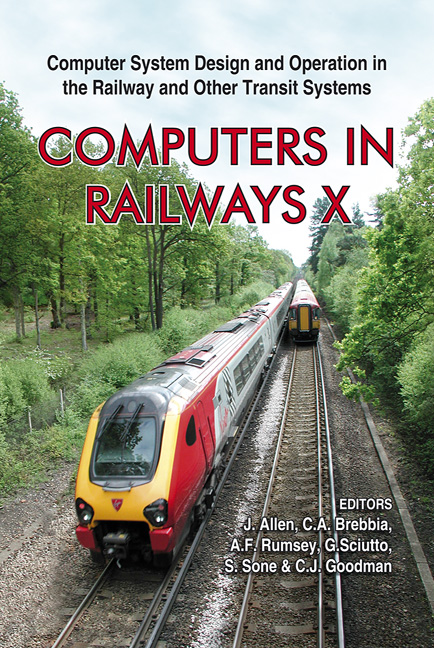RTCSIM: An Innovative, Extendable Computation Engine For Timetable Validation
Price
Free (open access)
Transaction
Volume
88
Pages
10
Published
2006
Size
546 kb
Paper DOI
10.2495/CR060611
Copyright
WIT Press
Author(s)
T. Polzin & R. Gooßmann
Abstract
In the beginning of 2005, HaCon started an initiative to redesign the computation engine for running times and mapping of train service dynamics as provided within the TPS Timetable Planning System, which is the core production system for railway operational planning in Denmark. In the light of increasing demands on timetable validation technology, this activity aimed at providing a future-safe solution for the integration of such technology into operational planning applications. Meanwhile, the first versions of the newly designed module RTCSIM have been integrated within the actual software version of TPS. The system is used for integrated production planning over different time horizons including STP (Short Term Planning) at Banedanmark, DSB and DSB S-train as well as Trafikstyrelsen, the Danish regulation and certification body. It was implemented within the years 1999–2002 and has evolved steadily until today, facing imminent changes in business processes and system interfaces. TPS features a high resolution level of infrastructure data including tracks and routes as well as detailed security system information laid out in a principle track plan. Train services are mapped into the model using detailed occupation and release information for the infrastructure elements following the UIC 406 leaflet. It includes conflict detection and resolution algorithms being applied to the overall capacity plan maintained by the system, featuring train services, temporary speed restrictions, track blockages or other withdrawals of network capacity. Using the modular architecture of the new computation engine will unleash several innovative potentials. This especially facilitates the future use of extensive functionality for assessment and optimisation of railway network capacity within TPS. With that, HaCon now continues with a long tradition of application development such as the well known UX-SIMU software package as supplied until 1999. This paper gives an overview about the underlying concept and mechanisms of the new computation engine RTCSIM as well as an assessment of impacts on future timetable validation techniques. Keywords: timetable planning, operational planning, timetable validation, microscopic infrastructure, simulation, capacity assessment.
Keywords
timetable planning, operational planning, timetable validation, microscopic infrastructure, simulation, capacity assessment.





